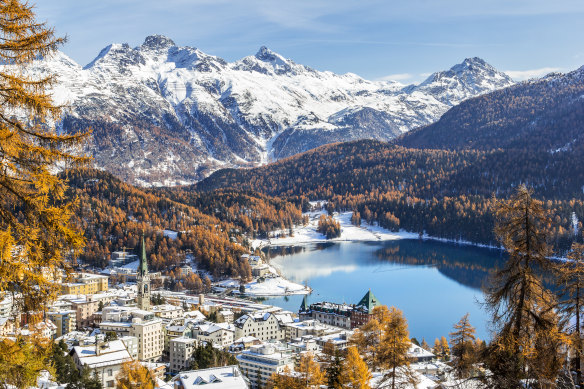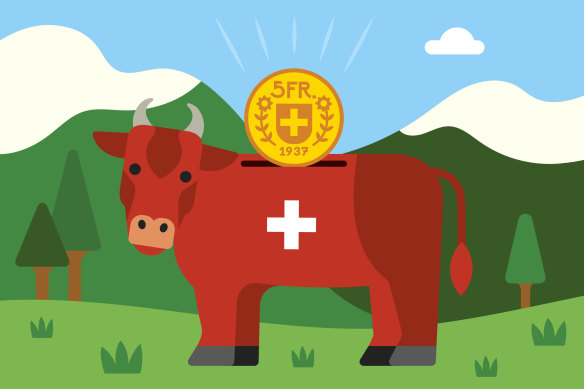This was published 1 year ago
How to do one of the world’s most expensive countries on the cheap
Given short distances and efficient public transport, you have no need to stay in well-known alpine resorts or cities. Swap Grindelwald for Adelboden, St Moritz for Samedan, Geneva for Lausanne, and accommodation prices drop 30 per cent.
Avoid big brands in favour of small, family-run hotels or youth hostels. Hotels with E&G (from the German abbreviation for simple and cosy) or Berghotel in their name are also good value. In alpine resorts, stay in hotels that offer half-board and you’ll save considerably on dining in restaurants.

Visit picturesque St Moritz but stay in the cheaper alternative, Samedan.
Eat your main meal at lunchtime. Fixed-price menus are the best value; your meal might be up to 50 per cent cheaper than the same food ordered a la carte in the evening. Good news: tipping isn’t expected.
You’ll find the best value in self-service cafeterias in large department stores, which offer a variety of hot dishes, salads and desserts. However, beware salad buffets, since salad is sold by weight and can be pricey if you load your plate.
Don’t eat as you would in Australia. Meat is very expensive – don’t count on Australian-sized steaks – and so are Asian cuisines, and there isn’t much takeaway culture. You’ll save money on vegetarian dishes, or otherwise ones that involve sausages. Restaurant drinks are astoundingly expensive, so stick to tap water.

Hiking is one of the best things you can do in Switzerland and doesn’t cost a centime.Credit: Greg Straight
Eating out is pricey in Switzerland and rarely exciting, so picnic often. Supermarkets have excellent cheese, charcuterie and bread, and you’re never far from patisseries. Picnic tables and fire-pits are common in hiking areas.
Hiking is one of the best things you can do in Switzerland and doesn’t cost a centime. Otherwise, avoid rack railways in favour of less glamorous but cheaper cable cars. At 64 Swiss francs ($113) return, for example, the Eiger Express cable car is half the price of the Jungfrau railway. It won’t get you as high, but is still a stunning ride.
Overhyped tourist trains, often privately run, cost significantly more than regular public trains that use the same lines. The Glacier Express costs 191 francs but you can travel between Zermatt and St Moritz using public trains on a day pass that costs just 52 francs.
If you have a Swiss rail pass, it won’t cover all mountain railways (many are private) but will save you a bundle on individual ticket purchases. A 15-day pass works out at 28 francs a day – not bad for unlimited buses, trains, lake boats and urban public transport, plus entry to more than 500 museums. Accompanied children under 16 travel free.
Work out if you’ll use a travel pass every day, however, as some alternatives are cheaper. For example, a local-transport day pass in Geneva costs only 10 francs, while many alpine resorts provide a guest card with your accommodation that offers free local transport, including mountain lifts.
The writer has travelled frequently to Switzerland as a guest of Switzerland Tourism and at his own expense.
Sign up for the Traveller newsletter
The latest travel news, tips and inspiration delivered to your inbox. Sign up now.